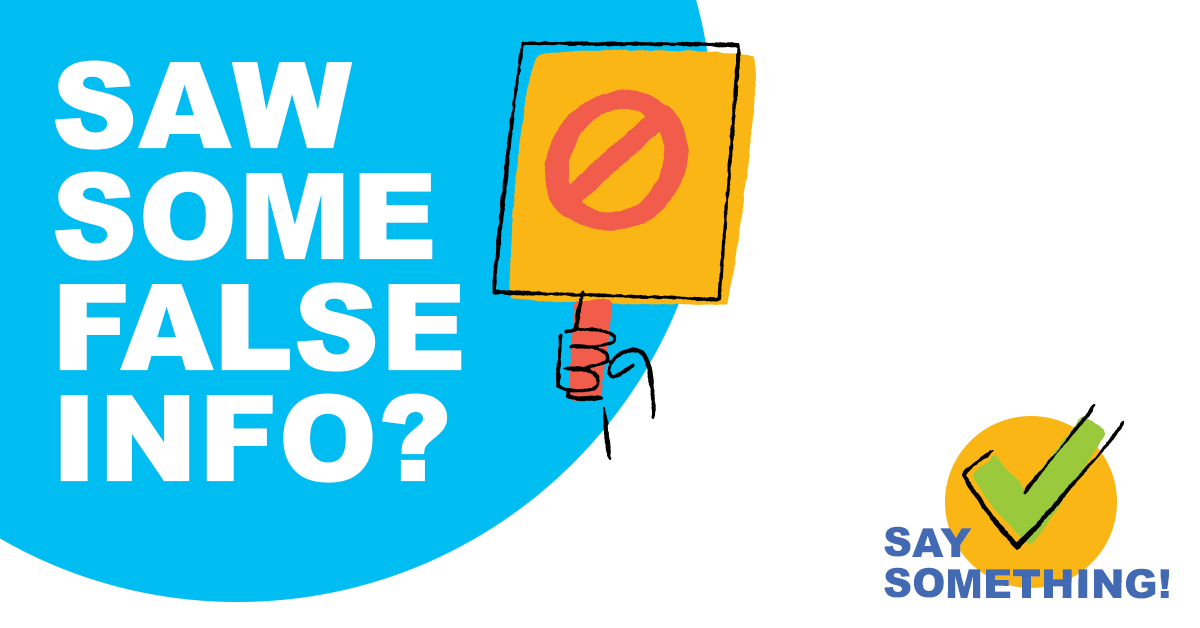Saw some false info? Say something!
 Here are a few approaches you can take based on the situation (download the infographic here):
Here are a few approaches you can take based on the situation (download the infographic here):
When you’re not ready to outright tell someone they’re wrong
- Do you want to avoid saying the person is wrong?
- Is the topic something people feel strongly about, like politics?
- Does the person have a history of arguing and ignoring others or facts?
- Are people who see the post more likely to listen to the sharer than you?
Question it.
If you’re not ready to correct or debunk bad information, question it. The idea is to nudge the sharer, and whoever else sees it, to really think about whether the content is accurate.
Try saying:
- "Are you sure that's true?"
- "Where did you hear that?"
- "Is that source reliable?"
When you want to avoid amplifying the false info
- Will a lot of people see the post?
- Did the person share it without checking to see if it was true?
- Do you have accurate info that corrects the bad info?
- Do other people see you as an expert or an authority?
Correct it.
Spot some bogus info? Just share accurate information from a trusted source that shows the truth. You don’t even have to mention the false info to correct it.
Try saying:
- "Health Canada has studied cellphone radiation for years and set guidelines to make sure it stays under safe levels."
- "Statistics Canada says that the crime rate is a lot lower than it was twenty years ago."
When you feel confident debunking the false info
- Are you okay with saying the person who posted it is wrong?
- Did the person share it because it supports something they strongly believe in, even though they knew it might be false?
- Can you clearly show that the info is false?
Debunk it.
You can take the power away from bad information by showing that it’s wrong and why. Hopefully, once you’ve debunked the bad info, onlookers will want to know the truth.
Use bit.ly/fact-search to check fact-checking tools like Snopes. Or visit BreakTheFake.ca to see how to check it yourself.
Try saying:
- "I checked Snopes and they say that video is fake."
- “I checked other sources and it turns out that picture is actually from after a rock concert, not a protest march.”
- “Fact-checkers have proven that the sign was Photoshopped.”
Some final pointers
- Be nice.
- Keep it simple and short.
- Don’t want to respond publicly? Send a private message!
- Learn more about fact-checking at BreakTheFake.ca
